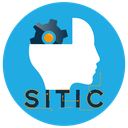Executive Secretary

III International Symposium on “Generation and Transfer of Knowledge for Digital Transformation
SITIC 2025
Abstract
Both discrete event simulation and machine learning are used in studies of the evolution of patients in intensive care to support decision making. At the Villa Clara Provincial Hospital, the evolution of patients who were ventilated and then died when transferred to other wards is studied. The simulation of discrete events, combined with machine learning, should facilitate these studies with a view to making better decisions that will have a positive impact on the procedure of the critical patient care service.
First, an exploratory analysis of the patient data was performed, detecting two groups in which the distributions of the model input variables such as ventilation time were studied. Atypical cases were also detected. The implemented model is based on the input data of a patient and the simulation of its evolution according to its similarity with the detected groups. Machine learning allows predicting the probability of survival of the patient within the process flow of the simulation. The simulation is replicated a number of times to estimate survival times before discharge or death. Within the constructed software it is possible to vary the values of input variables and model parameters, save experiments and statistically compare treatment variants on the basis of sample output variables for a patient. For validation purposes, the uncertainty of the predictions and estimates in relation to real data is shown.
Resumen
Tanto la simulación de eventos discretos, como el aprendizaje automático, se utilizan en estudios de evolución de pacientes en terapia intensiva para apoyar la toma de decisiones. En el hospital provincial clínico quirúrgico universitario Arnaldo Milián Castro de Villa Clara, se estudia la evolución de pacientes que fueron ventilados y luego fallecieron al ser trasladados a otras salas. La simulación de eventos discretos, combinada con el aprendizaje automático, debe facilitar estos estudios con vistas a tomar mejores decisiones que impacten positivamente en el proceder del servicio de atención al paciente grave.
Primeramente, se realizó un análisis exploratorio de los datos de los pacientes, detectando dos grupos en los que se estudiaron las distribuciones de las variables de entrada al modelo como el tiempo de ventilación. Se detectaron también casos atípicos. El modelo implementado parte de la entrada de datos de un paciente y la simulación de su evolución de acuerdo a su similitud con los grupos detectados. El aprendizaje automático permite predecir la probabilidad de supervivencia del paciente dentro del flujo de procesos de la simulación. La simulación se replica un número de veces para estimar los tiempos de supervivencia antes de salir de alta o fallecer. Dentro del software construido es posible variar los valores de las variables de entrada y parámetros del modelo, guardar experimentos y comparar estadísticamente variantes de tratamiento sobre la base de muestras de las variables de salida para un paciente. A modo de validación se muestra la incertidumbre de las predicciones y estimaciones con relación a datos reales
About The Speaker

Isael Pérez Triana

Discussion

 Gold
Gold
 Gold
Gold
 Gold
Gold
 Gold
Gold
 Silver
Silver